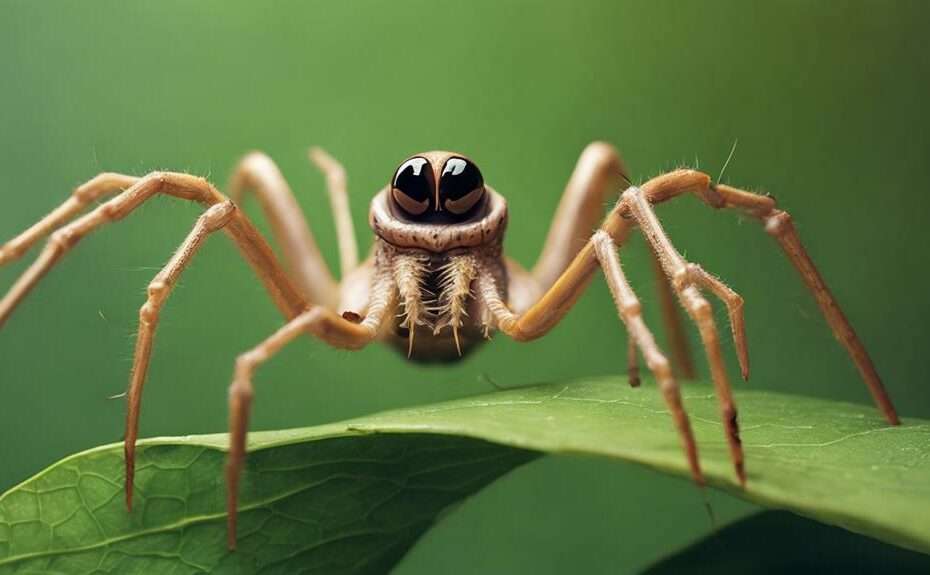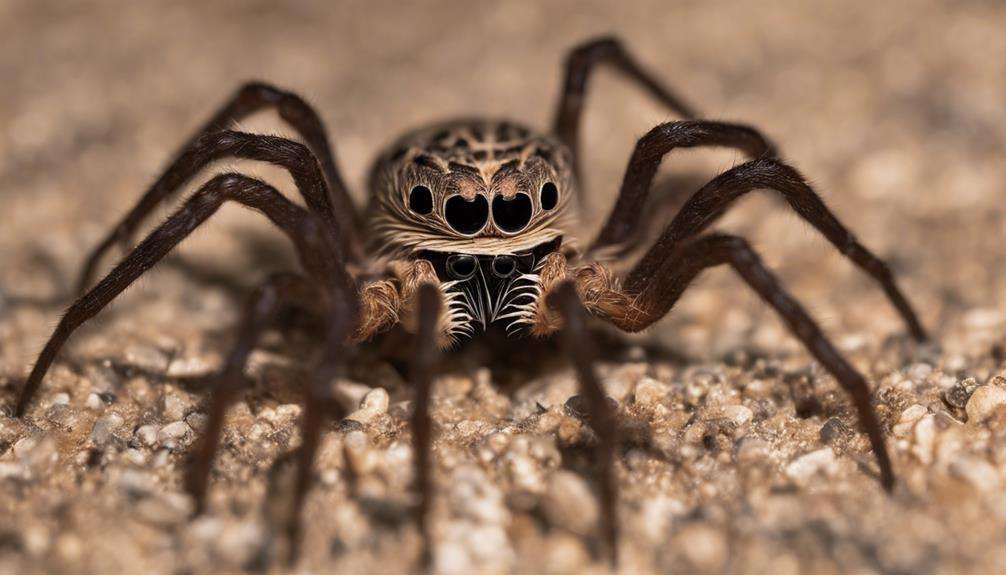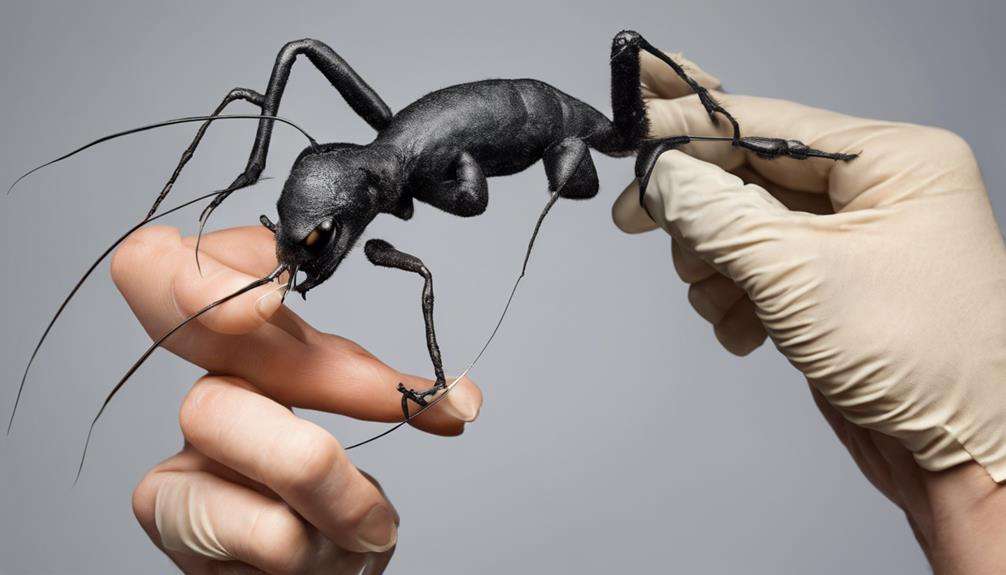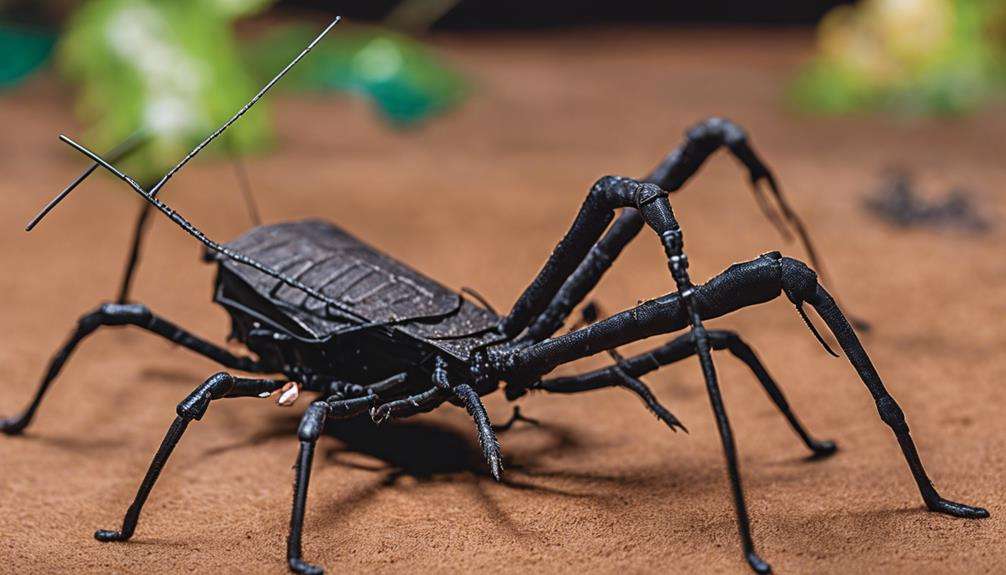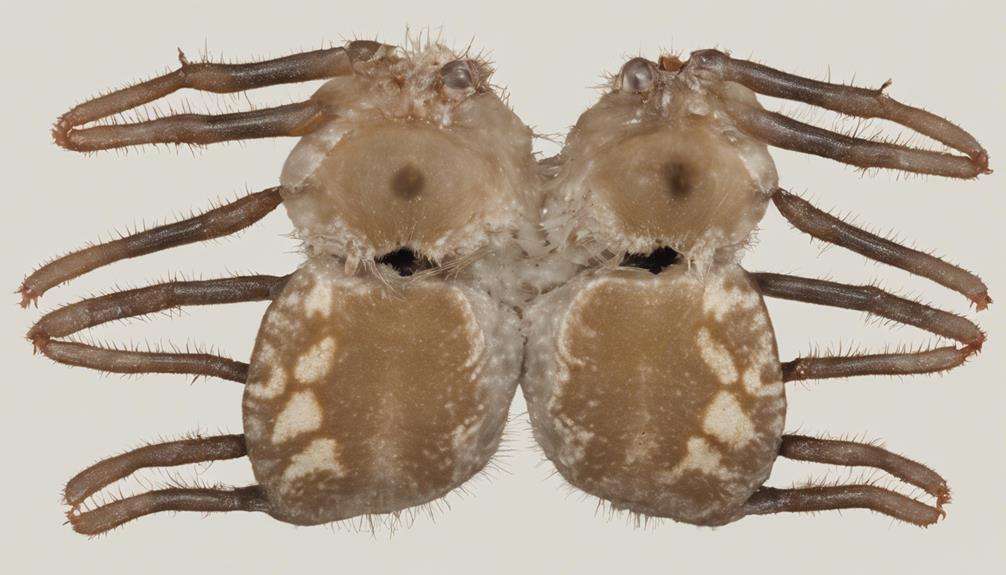If you're intrigued by unique pets, you may find it fascinating that pelican spiders possess a remarkable adaptation where their legs are elongated to aid in hunting.
This physical feature plays a crucial role in their survival and predatory prowess.
As you explore further into the world of pelican spiders as potential pets, you might uncover even more intriguing traits that make them stand out among other arachnids.
Key Takeaways
- Efficient hunters with deadly precision for pest control.
- Solitary and non-aggressive, suitable for low-maintenance pets.
- Intriguing courtship displays and reproductive adaptations.
- Unique evolutionary traits for captivating pet ownership.
Unique Pelican Spider Physical Characteristics
Have you ever wondered what sets the physical characteristics of pelican spiders apart from other spider species?
Pelican spiders exhibit a unique combination of features that make them stand out in the arachnid world. Their distinct tubular structure grants them the appearance of having long necks, with beak-like jaws situated below, enabling specialized hunting techniques.
These specialized hunting behaviors are facilitated by their maneuverable hunting abilities, allowing for efficient predation through deadly precision. The pelican spider adaptations are finely tuned for their specialized hunting behavior, giving them an edge in capturing prey from a distance.
The muscular head of these spiders powers their jaws, which can impale prey with remarkable accuracy. It's through these unique physical features that pelican spiders have evolved to excel in their hunting strategies, making them a fascinating subject for scientific study and admiration in the realm of arachnology.
Pelican Spider Hunting Behavior Insights
Pelican spiders' hunting behavior insights reveal a strategic approach that leverages their unique physical adaptations for efficient predation. These spiders, with their elongated bodies and distinctively long necks ending in beak-like pincers, employ specialized predatory techniques to capture their prey with deadly precision.
By impaling other spiders using their pincers, pelican spiders demonstrate a unique hunting strategy that sets them apart in the spider world. They're known to follow silk draglines at night, stealthily stalking their prey in leafy habitats before swiftly capturing them.
Once they've secured their prey, pelican spiders exhibit a behavior of holding the captured spider away from their bodies, minimizing the risk of counterattacks. This behavior showcases their efficient hunting methods and highlights their reliance on unique features for successful predation.
Distinctive Social Interactions Among Pelican Spiders
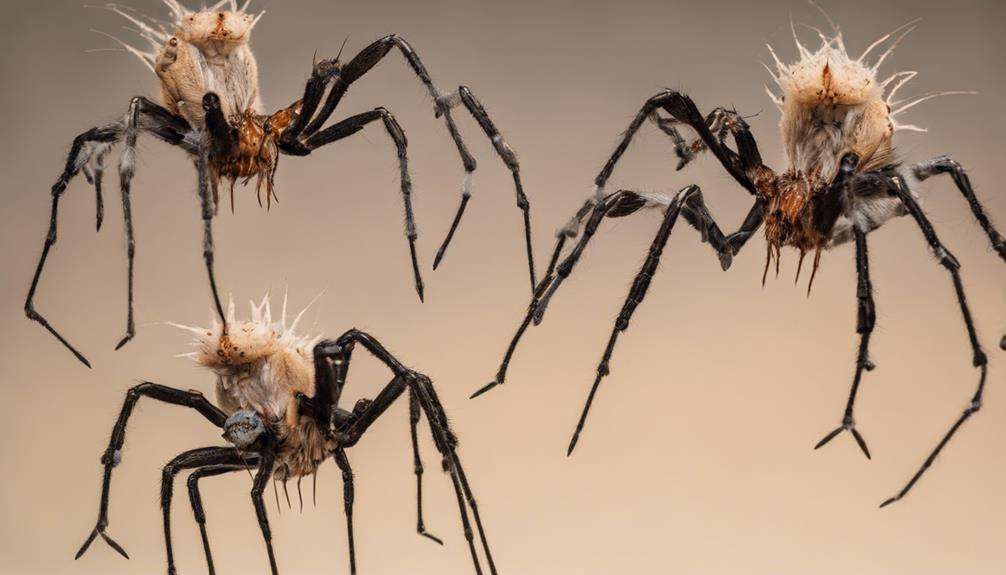
Distinctive in their social interactions, pelican spiders exhibit unique behaviors that showcase their role as efficient predators within their ecosystem.
Key Points:
- Specialized Predatory Instincts: Pelican spiders display specialized predatory instincts that make them efficient hunters. Their intimidating nature towards other spider species highlights their exceptional hunting skills and predatory efficiency.
- Distinct Social Interactions: These spiders have unique interactions with different spider species, indicating their specialized role in the ecosystem as efficient predators. Their solitary behavior and non-aggressive stance towards non-prey species contribute to their distinct social interactions within their ecological niche.
- Adaptive Survival Strategies: When threatened, pelican spiders demonstrate adaptive survival strategies by dropping to the ground as a defense mechanism. This behavior not only showcases their ability to evade danger but also emphasizes their efficient predator-prey dynamics.
Pelican spiders' hunting techniques and behaviors not only shape their interactions with other spiders but also illustrate their vital role as efficient predators in their ecological niche.
Pelican Spider Feeding Habits Unveiled
Efficiently showcasing their predatory prowess, pelican spiders utilize their long, beak-like pincers to impale and feed on other spiders, unveiling unique feeding habits that highlight their specialized hunting behavior. These spiders inject venom through their chelicerae into their prey, effectively immobilizing them before consumption. Notably, pelican spiders are strategic in holding their impaled prey at arm's length to avoid potential counterattacks, displaying a calculated approach to feeding.
Their specialized hunting technique involves trailing silk draglines of other spiders in leafy habitats, allowing them to efficiently capture their prey. This method showcases the pelican spider's predatory behavior, emphasizing their deadly and specialized approach to hunting. By impaling and injecting venom into their prey, these spiders exhibit a swift and effective means of securing food in their environment, establishing themselves as active predators within their ecosystem.
The feeding habits of pelican spiders underscore their unique adaptations for hunting and consuming other spiders, portraying them as skilled and lethal predators in their natural habitat.
Intriguing Reproduction Traits of Pelican Spiders
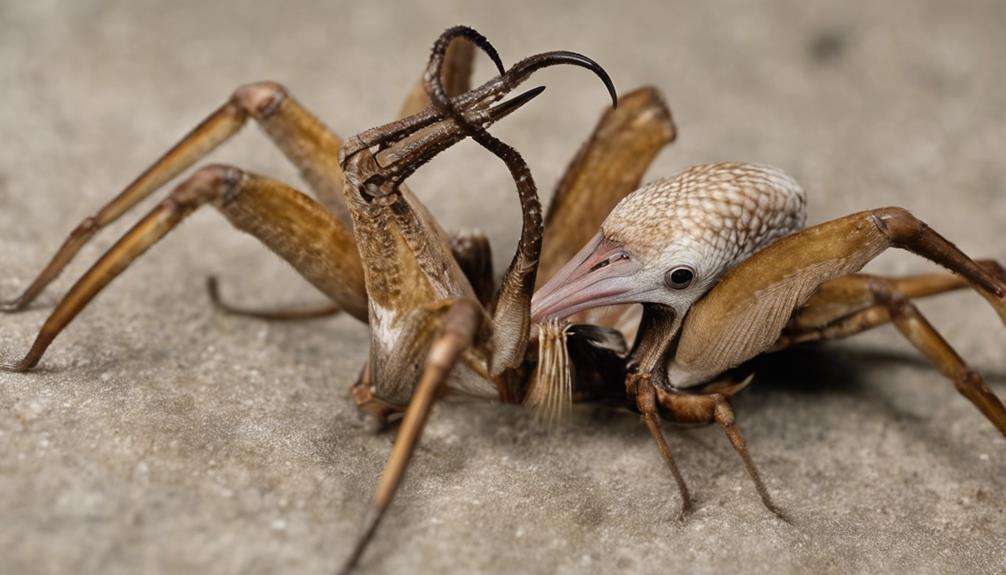
Utilizing specialized reproductive organs known as spermathecae, female pelican spiders exhibit a unique trait in storing sperm for extended periods to fertilize multiple egg sacs efficiently. This reproductive strategy allows them to ensure successful fertilization and maximize their reproductive output in their unique ecological niche.
Intriguing Reproduction Traits of Pelican Spiders:
- Specialized Spermathecae: Female pelican spiders possess specialized organs called spermathecae, enabling them to store sperm for extended periods.
- Efficient Fertilization: By utilizing spermathecae, female pelican spiders can fertilize multiple egg sacs without the need for frequent mating, ensuring efficient reproduction.
- Elaborate Courtship Displays: Males engage in intricate courtship displays to attract females and transfer sperm to their specialized storage organs, showcasing fascinating reproductive behavior.
The reproductive behavior of pelican spiders demonstrates remarkable adaptations for successful reproduction, highlighting the intricate mechanisms at play in ensuring the continuation of their species in their specialized ecological habitat.
Frequently Asked Questions
What Are the Physical Characteristics of a Pelican Spider?
Long legs, unusual mouthparts, tiny eyes, specialized claws, unique anatomy, distinct coloration, adapted limbs, strange appearance, curved beak, and spiky hairs characterize the physical attributes of a pelican spider, showcasing a fascinating blend of evolutionary adaptations.
Are Pelican Spiders Poisonous?
You're wondering if pelican spiders are poisonous. Their venomous bite doesn't pose risks to humans. While they have toxic fangs for hunting, their deadly venom targets spider prey, not larger animals. Their venom effects are specialized for hunting tactics.
Why Do Pelican Spiders Look Like That?
Pelican spiders' unique appearance, resembling a pelican, is an evolutionary adaptation for predator-prey interactions. Their elongated neck and beak-like mouthparts aid in insect hunting through visual deception, showcasing specialized behavioral patterns evolved for efficient predation.
What Is the Diet of a Pelican Spider?
Insect diet of a pelican spider revolves around a carnivorous appetite for other spiders. Prey consumption involves immobilizing and feeding on them with venom. Feeding habits showcase efficient hunting techniques, avoiding cannibalism while targeting diverse spider species.
Conclusion
As you reflect on the unique traits of pelican spiders, you can't help but marvel at their intricate adaptations for survival. Their bird-like appearance and specialized hunting techniques evoke a sense of wonder and admiration.
The intricate web of nature's design, woven through these fascinating creatures, leaves you in awe of the beauty and complexity of the natural world.
Next time you encounter a pelican spider, remember the intricate web of life they represent.
